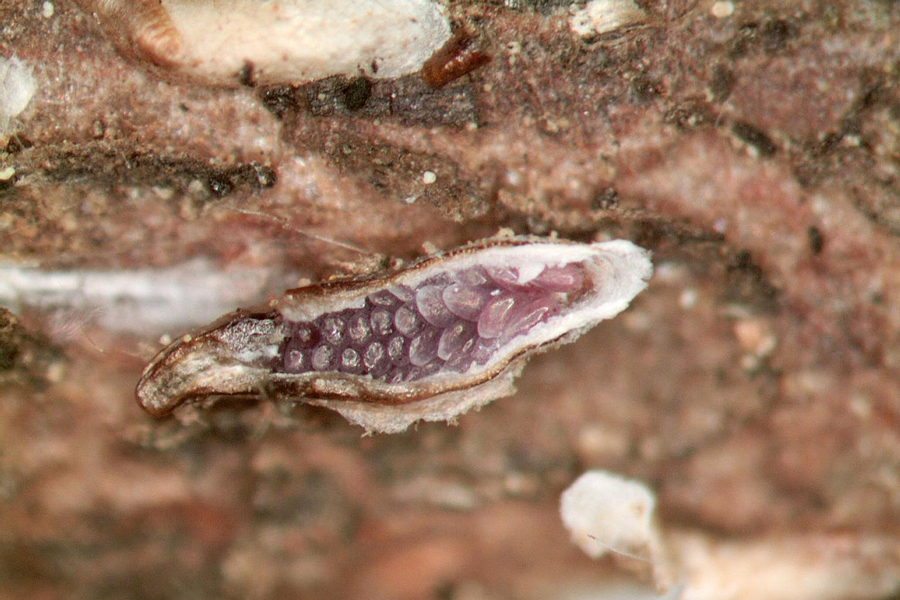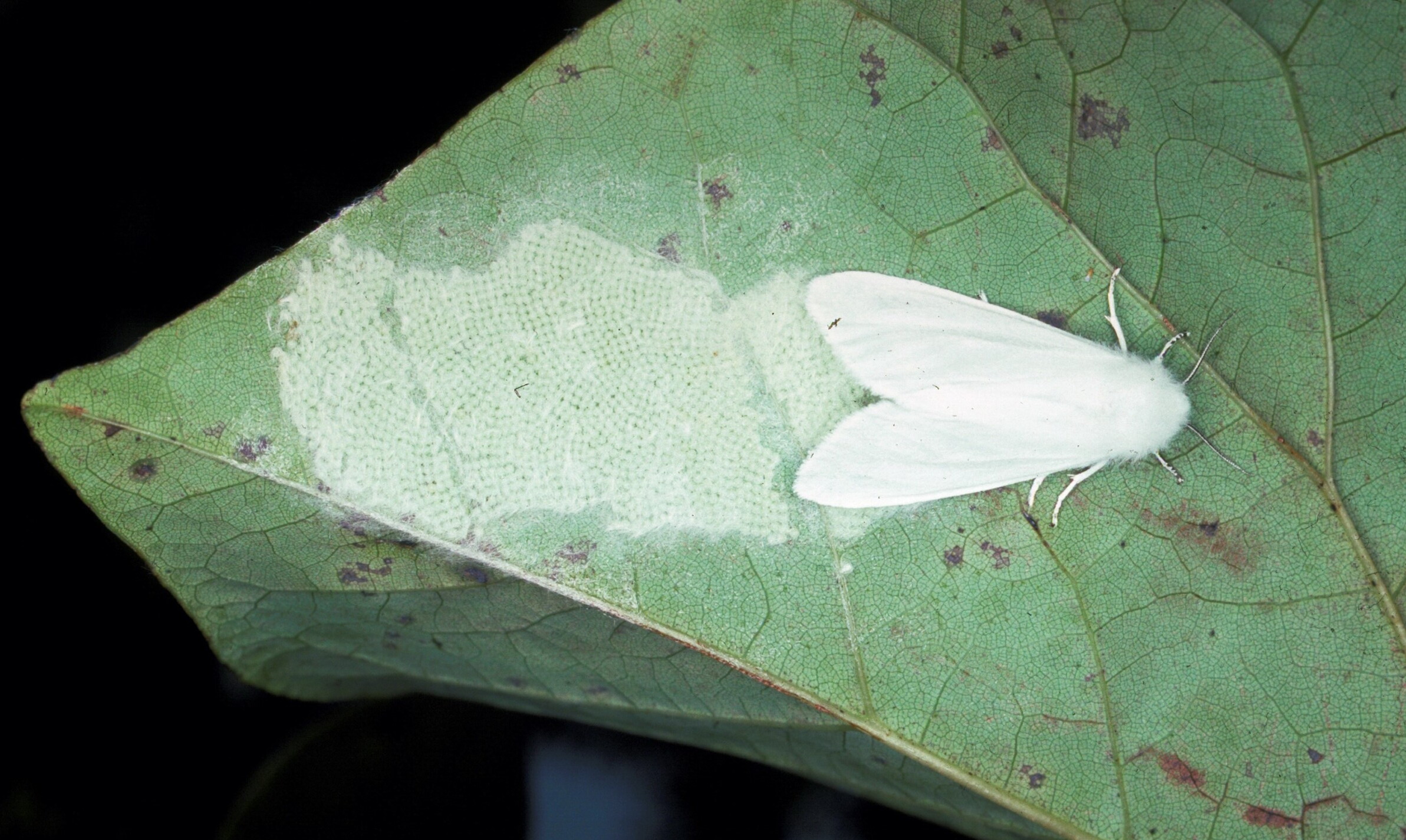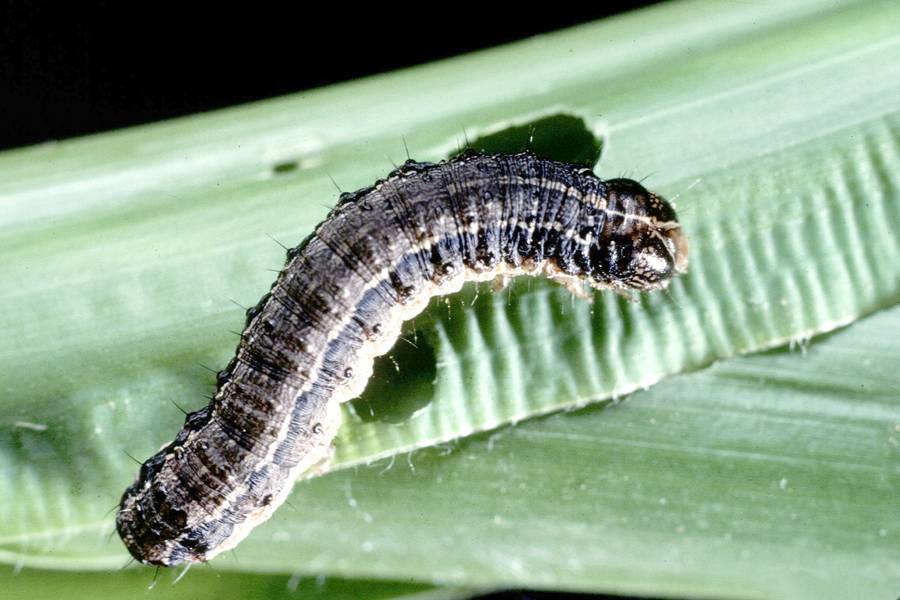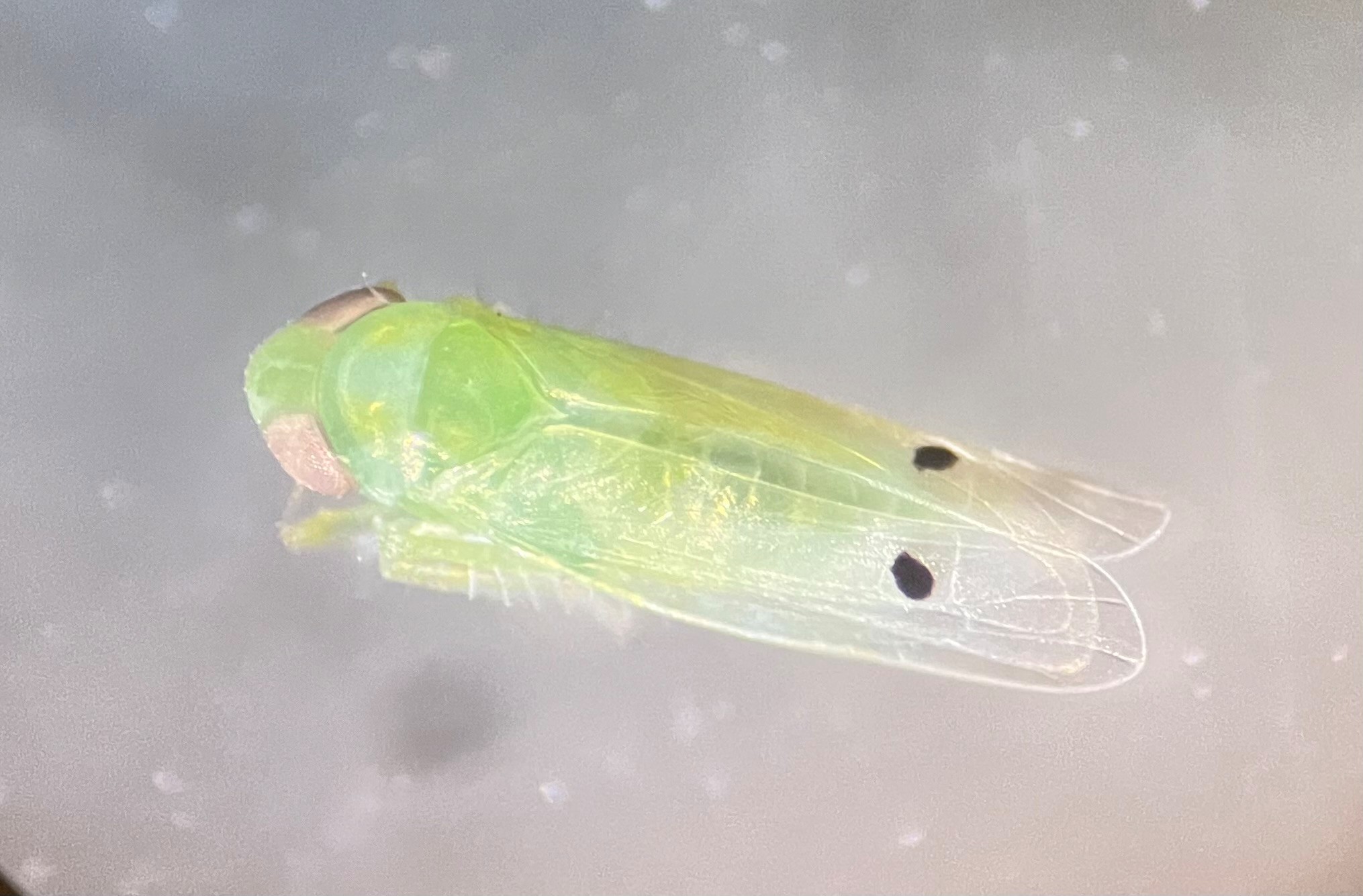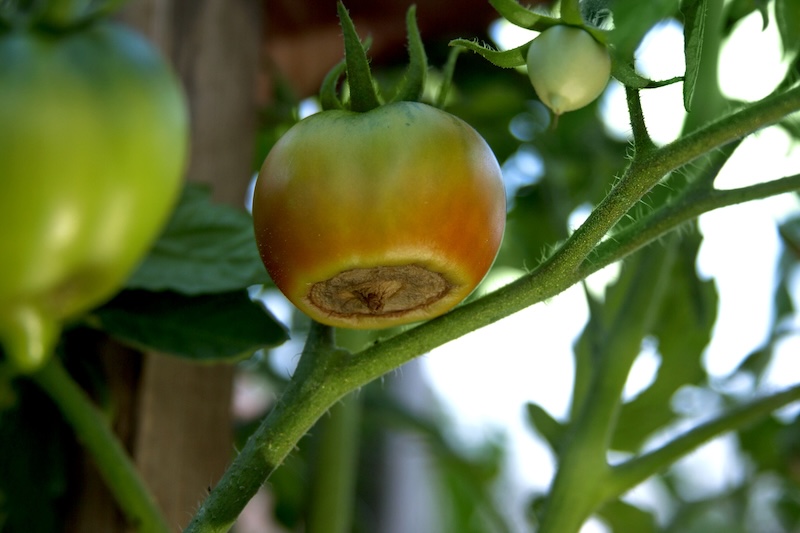Introduction
The walnut caterpillar, Datana integerrima Grote and Robinson, is native to North America and is mostly distributed in the eastern part of the United States. The larvae feed on the leaves of the plants in the family Juglandaceae, including pecan, walnut, butternut, and other species of hickory.
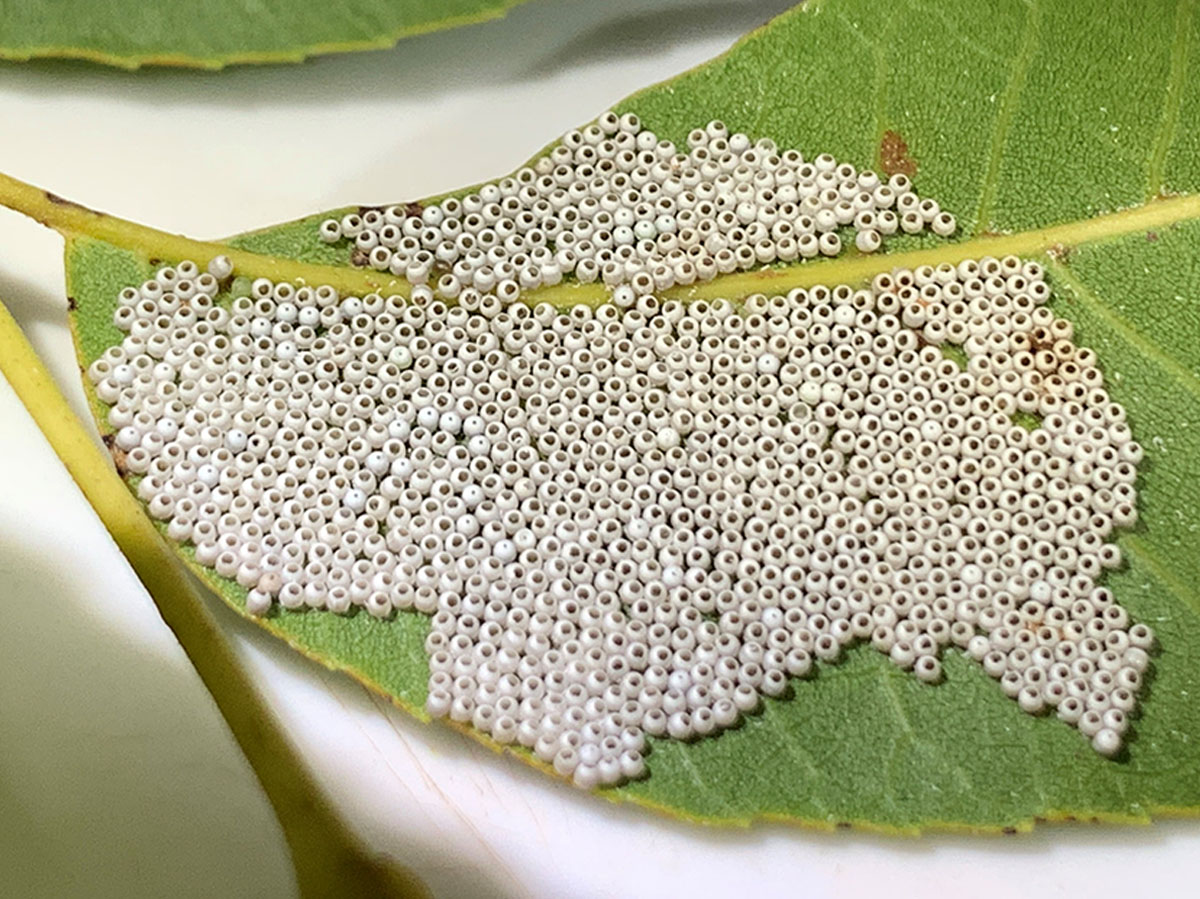
Photo: Rajendra Acharya, UGA.
Biology
The walnut caterpillar belongs to the order Lepidoptera and has four distinct life stages: egg, larva, pupa, and adult. Eggs are creamy white to pale green and laid in clusters of more than 260 eggs on the lower surface of leaves (Figure 1). Eggs hatch in 2–3 days. Newly hatched larvae are pale green and then turn reddish-brown (Figure 2).
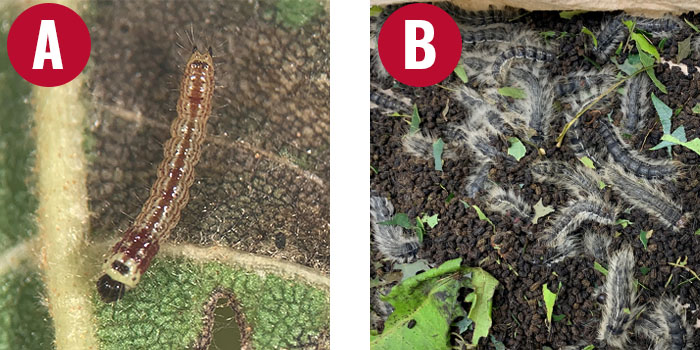
Photos: Rajendra Acharya, UGA.
Mature larvae change to a dark black color and are covered with whitish hairs (setae). Larvae show a unique aggregation behavior during the time of molting (at all stages). They group on the underside of branches or stems as they approach molting. Larval skins (exuvia) and detached head capsules can be seen where they aggregate.
The larva undergoes five developmental stages (1st to 5th instars) and its lifecycle is completed in around 22 days at 80.6 °F (27±1 °C). During the last instar, mature larvae fall on the ground and pupate in the soil. Pupae are shiny and reddish brown in color. The moths will emerge after approximately 14 days. They are light brown in color with a dark red thorax (Figure 3).

Photo: Rajendra Acharya, UGA.
Damage
Walnut caterpillar larvae feed in groups. The younger larvae (1st to 3rd instar) skeletonize leaflets (Figure 2a), and larvae localize to a few branches. Mature larvae (4th to 5th instar) completely devour leaflets, leaving only the petiole, and spread throughout the canopy (Figure 4).
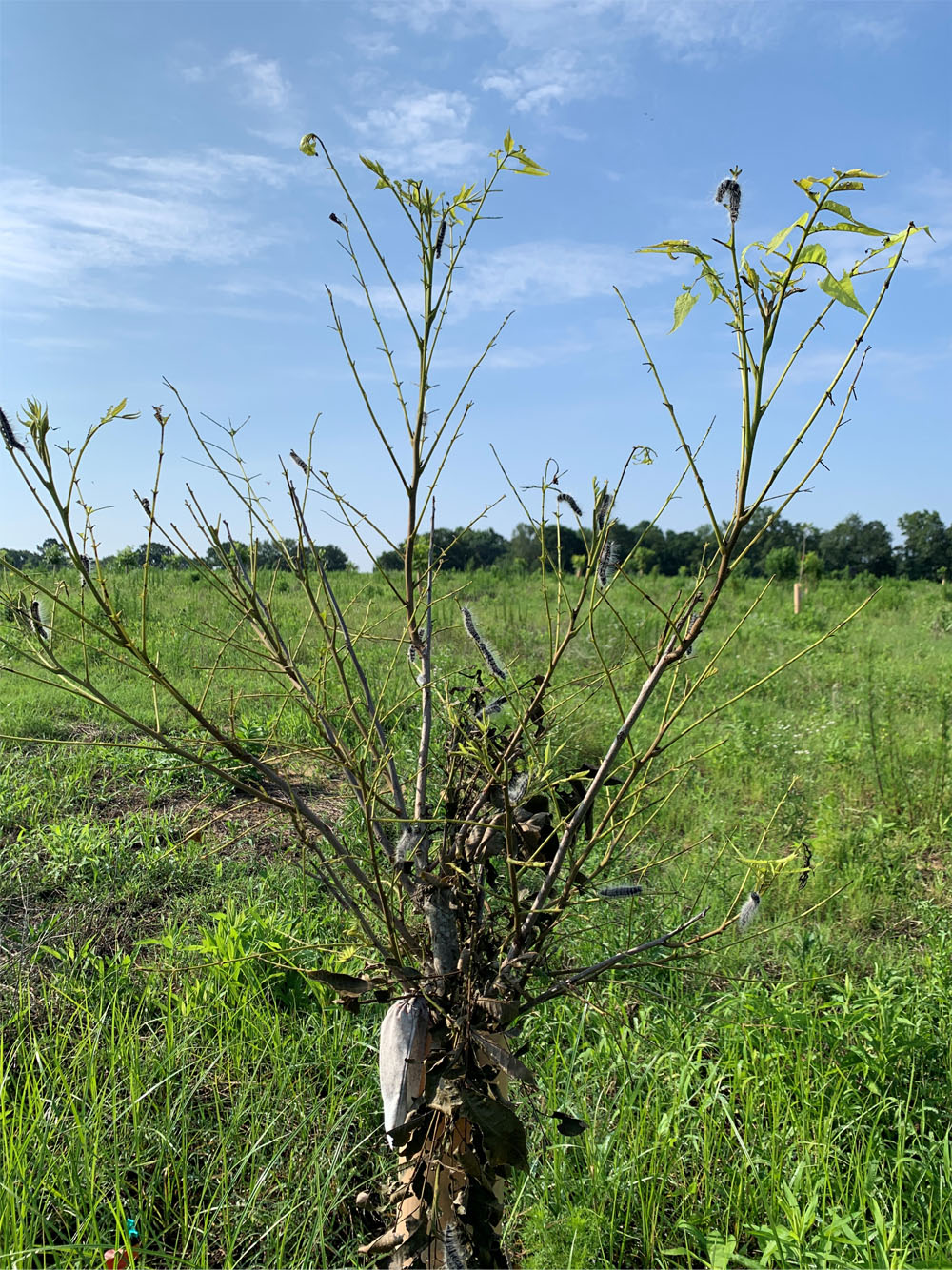
Photo: Rajendra Acharya, UGA.
Mature larvae cause 97.5% of total damage in only 7–8 days, while younger larvae only cause 2.5% of damage over 14 days (Cutler & Harris, 1979).
Signs of Infestation
- Creamy white to pale color egg mass on the underside of leaves.
- Group of reddish-brown larvae.
- Defoliation on some terminal branches.
- Larval frass on the ground.
- Molted skin and head capsules on the tree trunk or branches.
Management
The walnut caterpillar is not a major economic pest in pecans. However, heavy pressure and outbreak events can cause severe damage by defoliating the tree.
The walnut caterpillar population usually is naturally managed in the field because of the number of natural enemies, including predators (lady beetles and spiders), parasitoids (egg and larval parasitoids), and microbial pathogens (entomopathogenic fungi and entomopathogenic nematodes).
As larvae of walnut caterpillars feed in groups, they can be managed by hand killing and by removing the egg masses from leaves in small trees and small orchards.
When the insect population is high or during heavy damage, application of insecticides on larval clusters is the best way to control this pest. Both Bacillus thuringiensis kurstaki (Btk) and spinosad are effective on walnut caterpillars. Other insecticides, such as bifenthrin and permethrin are also effective, but they also can kill the natural enemies of walnut caterpillars.
References
Cutler, B. L., & Harris, M. K. (1979). Foliage consumption and damage by the walnut caterpillar on pecan in Texas. Journal of Economic Entomology, 72(3), 315–318. https://doi.org/10.1093/jee/72.3.315
Hill, S. (1938). Important pecan insects of northern Florida. The Florida Entomologist, 21(1), 9–13. https://doi.org/10.2307/3492571



